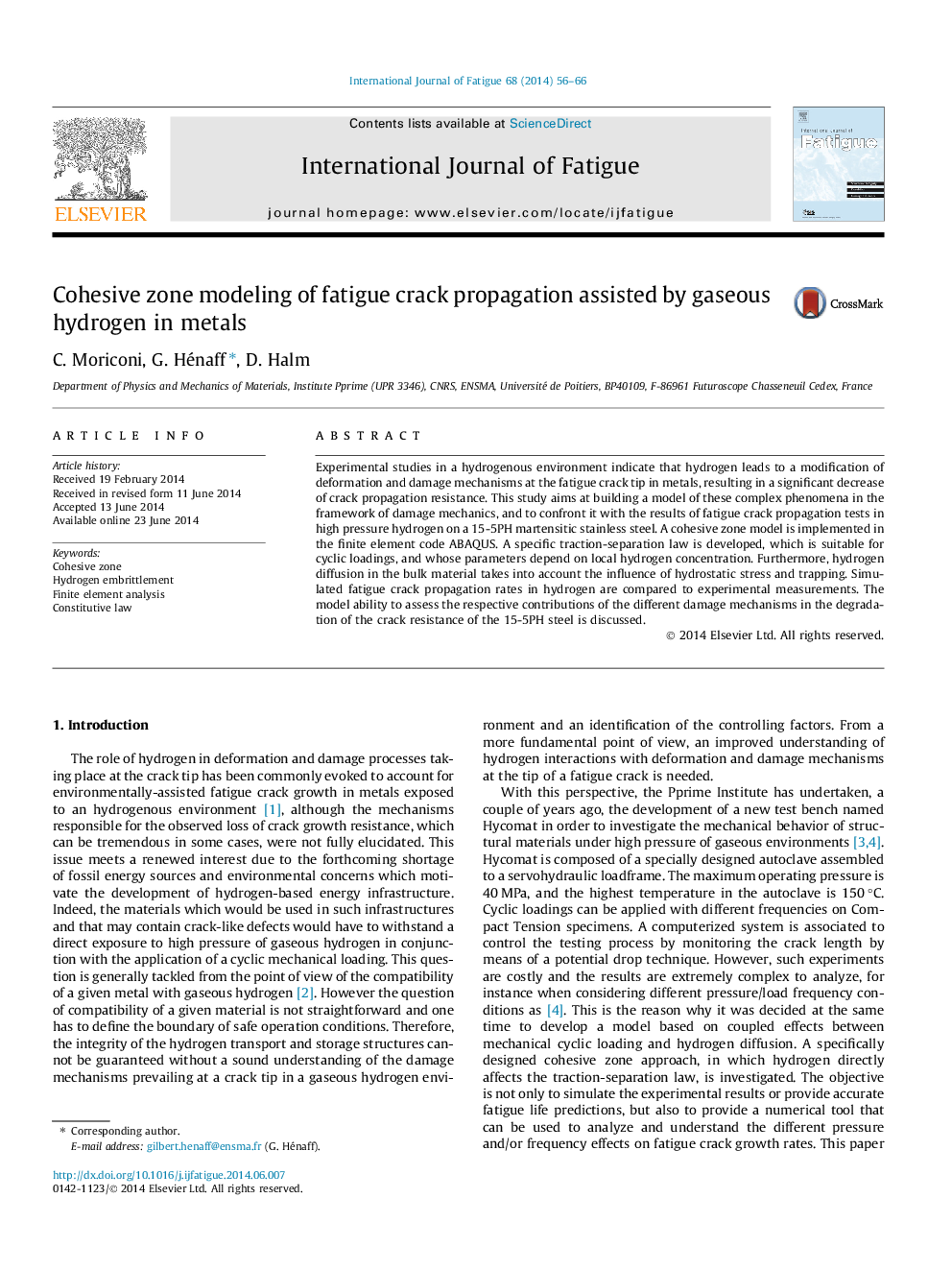| Article ID | Journal | Published Year | Pages | File Type |
|---|---|---|---|---|
| 775127 | International Journal of Fatigue | 2014 | 11 Pages |
•Development in the framework of the thermodynamics of irreversible processes.•Traction separation law affected by dissolved hydrogen and a damage parameter.•Comparison of numerical simulations with experimental data.
Experimental studies in a hydrogenous environment indicate that hydrogen leads to a modification of deformation and damage mechanisms at the fatigue crack tip in metals, resulting in a significant decrease of crack propagation resistance. This study aims at building a model of these complex phenomena in the framework of damage mechanics, and to confront it with the results of fatigue crack propagation tests in high pressure hydrogen on a 15-5PH martensitic stainless steel. A cohesive zone model is implemented in the finite element code ABAQUS. A specific traction-separation law is developed, which is suitable for cyclic loadings, and whose parameters depend on local hydrogen concentration. Furthermore, hydrogen diffusion in the bulk material takes into account the influence of hydrostatic stress and trapping. Simulated fatigue crack propagation rates in hydrogen are compared to experimental measurements. The model ability to assess the respective contributions of the different damage mechanisms in the degradation of the crack resistance of the 15-5PH steel is discussed.
